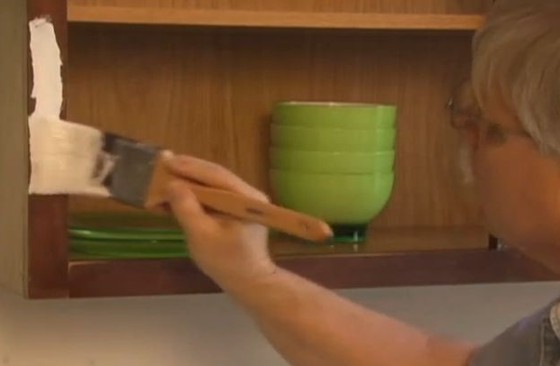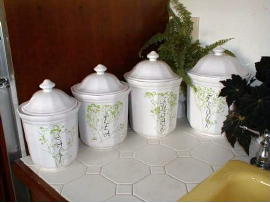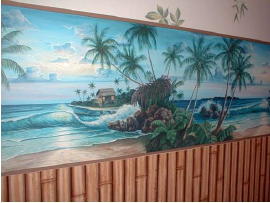The first time I saw a faux painting technique in action happened about six years ago. I was touring a model home that was under construction in Northern Kentucky. The builders were fans of mine and had asked me to stop by to see a hybrid home where they were using metal floor joists and wall studs. The nearly completed home was next door and two women painters were faux painting a room.
The Look of Leather
An adjacent room was already complete and the walls looked as if they had been covered with a high quality leather. The coloration, texture and 3D appearance was amazing. They were simply applying a translucent glaze over a base color and creating the look by applying a thin sheet of plastic throw-away drop cloth over the wet glaze. The plastic was crinkled and wrinkled while it was on the wall and when they quickly peeled it off, it gave this random texture and appearance. I was amazed.
Tough To Do
What the women painters were doing was very difficult. They were working super fast and had the technique down. You can achieve the same look yourself by using a different tool - the rag roller. I saw a very cool rag roller at the Sears Editors Conference in June, 2001. It is available at all Sears stores and is a very unique tool. It is simply a plastic tube that is covered with a fabric sock that has an opening at each end. The fabric is folded over the end of the roller cover and held in place with two inserts. You twist the rag on the tube before installing the inserts. The twisting produces the random pattern that is duplicated on the walls as the roller is moved across the wall.
Got Glaze?
Glaze is simply a paint product that is lacking in fillers or pigment extenders. Regular paint contains dust or finely ground particles that absorb the colored pigments added at the store. These solid particles produce the hiding power of paint. You don't want these particles in glaze. You want to be able to see through the glaze down to the base color of the wall. Think sunglasses.
I purchased my glaze at a Sherwin Williams paint store. You can also get it at Sears or any other paint store that carries a full line of products. If you open the glaze before color is added, it will look like diluted milk, but it will indeed dry clear. In fact, some people apply clear glaze to a wall surface to make it look like it is striped or even mottled. You can use the rag roller to apply clear glaze and it does give a wall surface a unique appearance as long as you do not completely cover all of the base color with glaze. If you do, the wall simply looks like it was painted with a semi-gloss paint.
Glaze Extenders
Latex glaze dries incredibly fast. There is no body to glaze since it is primarily a resin you are applying to the wall. This rapid dry time means you can put the room into use very quickly but it also means you can have a nightmare trying to work with it.
Full line paint stores carry additives that you can mix with paint or glaze. One of these happens to be a drying time extender. The one I used was called Floetrol® Latex Paint Conditioner. It is made by the Flood Company. It is a common paint and/or glaze extender. It is also milky in appearance but it doesn't change the color of the glaze.
The use of the extender is mandatory. It makes all the difference in the world. You never get double coverage marks if you keep up a steady pace going down a wall. The extenders are affordable and easy to add to the glaze. Only use as much as the label states!
Column B384


